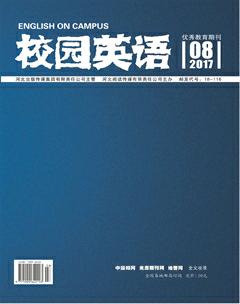Lydia the Woman Warrior A Feministic Study of Lydia in Pride and Prejudice
王楠
【Abstract】Jane Austens works are limited in quantities, but have a very high literary value; Pride and Prejudice is just one of her best publications. In this work, Jane Austen breaks through the previous model of extreme literary character images, endowing them with personal characteristics and abilities to contemplate. In this paper, we tries to research Austens feminist literary thoughts reflecting through the role of Lydia and to prove the significance of Jane Austens writing by studying the social and literary circumstances of her time.And this has rendered female writers recapture the discourse power from mens long-term controlling, giving a number of female writers opportunities to express their awareness.
【Key words】feminism; Lydia; Pride and Prejudice
Chapter One The First Voice of Feminism in Pride and Prejudice
1.1 The Two Extremes of Female Images in Previous Male Writers Works
Sandra Gilbert and Susan Gubar are famous contemporary American feministic critics. They have cooperated with each other in publishing many famous works and The Madwoman in the Attic is just one of their publications. In this book, they make a research of several previous American and English female writers with a detailed analysis on their works.
1.2 The Main Female Images in Pride and Prejudice
Elizabeth Bennet
Elizabeth Bennet has perhaps received more admiration than any other female images in English literature. Through this novel, Elizabeth not only stands for a single personality, but also becomes the summation of a type, developing from some individual into a category. And Elizabeth builds herself up as an ironic spectator, who is able and always fully prepared to criticize.
Lydia Bennet
Lydia was a stout, well-grown girl of fifteen, with a fine complexion and good-humored countenance; a favorite with her mother, whose affection had brought her into the public at an early age.It seems that in Pride and Prejudice, Lydia is criticized by Jane Austen for her unique characteristic. And in many previous literary criticisms, Lydia is also regarded as a bad girl.
Chapter Two A Macro Study on Feminism
2.1 The Narrative Discourse in Pride and Prejudice
Narration is to tell an event according to certain order, which means to organize those ideas looking like trivial and fragmentary into the coherent series of events. In significant measure, Chinese ancient narrative literature in history is developed based on the generalized literary genres which are represented by historical biography, and the source of western narrative literature should be traced back to the epic.
Along with Jacobsons great efforts, Russian Formalism and Structuralism has caused a profound impact research on the narrative literature in Paris in 1960s. All the different studies of French structuralist narratology in 1960s point to a common goal that they try to abstract and generalize a basic narrative model from the ever-changing narrative activities.
2.2 The Rhetorical Devices in Pride and Prejudice
The Rhetorical Device of Repetition
In Pride and Prejudice Jane Austen used the rhetorical device of repetition a lot to emphasize. Take the following part in this work for an example.
The rest of the evening was spent in conjecturing how soon he would return Mr.Bennets visit, and determining when they should ask him to dinner. In a few days Mr. Bingley returned Mr. Bennets visit.
We can see from the above sentences that there are two same phrases of “Mr. Bennets visit”. These two phrases forms into a kind of relation to make sure not only that the morphologies of the antecedents are the same with each other but also that the targets they stands for are the same with each other, too.
The Rhetorical Device of Irony
The comparison between the attitude of Elizabeth and Charlotte reflects Austens intent of irony. Without affection, marriage is meaningless. When Elizabeth pays a visit to Charlotte, she finds that they both do not like Mr. Collins, and all Charlotte wants is just a kind of material insurance.
“It is a truth universally acknowledged that a single man in possession of a good fortune must be in want of a wife.”
The context is connected by series of dramatic plots with fruitful scenes, such as balls, banquets and games. What dominants these scenes are actually the dialogues and behaviors among the roles.
References:
[1]Gilbert Sandra M and Gubar Susan The Madwoman in the Attic:The Woman Writer and the Nineteenth-Century Literary Imagination.New Haven and London,Yale University Press,1979.102~105.
[2]Selden Raman The Theory of Criticism:From Plato to the Present.New York,Longman Group UK Limited,1988.54.

